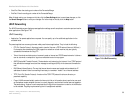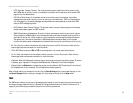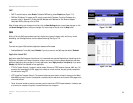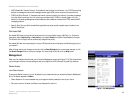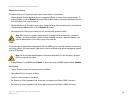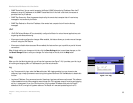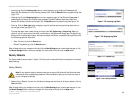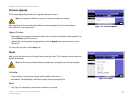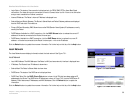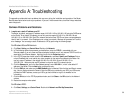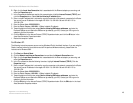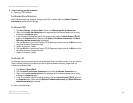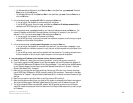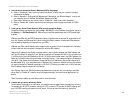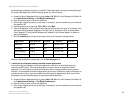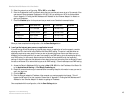
38
Chapter 7: Using The Router’s Web-based Utility
Local Network
EtherFast Cable/DSL Router with 8-Port Switch
• Login Status. The status of the connection is displayed only for PPPoE, RAS, PPTP, or Heart Beat Signal
connections. For these dial-up style connections, there is a Connect button to click if there is no connection
and you want to establish an Internet connection.
• Internet IP Address. The Router’s Internet IP Address is displayed here.
• Subnet Mask and Default Gateway. The Router’s Subnet Mask and Default Gateway address are displayed
here for DHCP and static IP connections.
• Primary DNS and Secondary DNS. Shown here are the DNS (Domain Name System) IP addresses currently
used by the Router.
• DHCP Release. Available for a DHCP connection, click the DHCP Release button to release the current IP
address of the device connected to the Router’s Internet port.
• DHCP Renew. Available for a DHCP connection, click the DHCP Renew button to replace the current IP
address—of the device connected to the Router’s Internet port—with a new IP address.
Click the Refresh button to update the on-screen information. For further help on this tab, click the Help button.
Local Network
The Local Network screen displays information about the local network. See Figure 7-31.
Local Network
• Local MAC Address. The MAC Address of the Router’s LAN (local area network) interface is displayed here.
• IP Address. The Router’s local IP Address is shown here.
• Subnet Mask. The Router’s Subnet Mask is shown here.
• DHCP Server. The status of the DHCP server is displayed here.
• DHCP Client Table. Click the DHCP Clients Table button to view a list of PCs that have been assigned IP
addresses by the Router. The DHCP Active IP Table screen, shown in Figure 7-32, lists the DHCP Server IP
Address, Client Hostnames, IP Addresses, and MAC Addresses. Click the Refresh button to update the
information.
Click the Refresh button to update the on-screen information. For further help on this tab, click the Help button.
Figure 7-31: Local Network
Figure 7-32: DHCP Active IP Table



